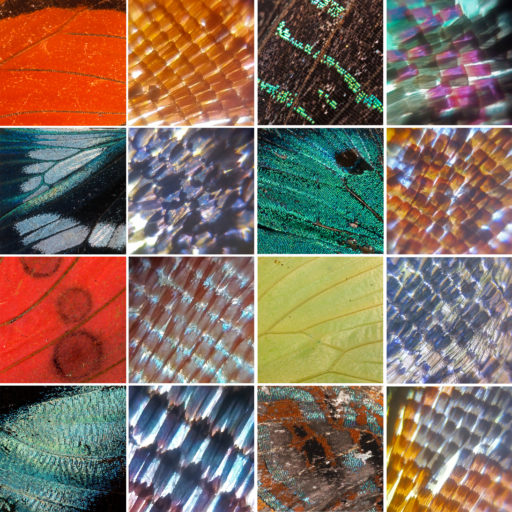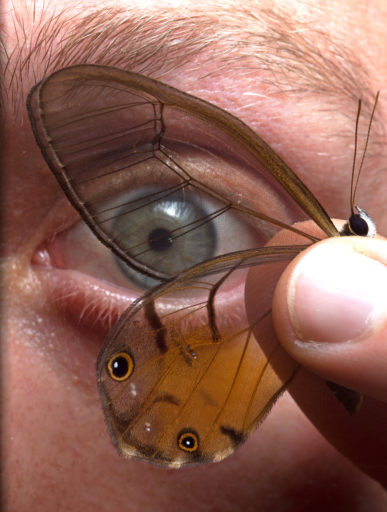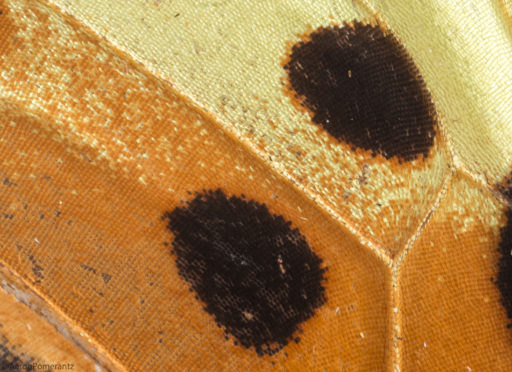The extensive diversity of colorful patterns in butterflies and moths (Lepidoptera) have influenced studies in a variety of fields, including evolutionary biology, ecology, and bioinspired photonics. The primary unit for color in Lepidoptera is the wing scale cell and the underlying mechanism for a particular color can be due to either pigmentation from a biochemical pathway, or due to the physical architecture of scales manipulating wavelengths of light, known as structural color.



To better understand processes underlying structural scale modifications, I am investigating a unique coloration strategy: transparency within the Lepidoptera. Numerous species of Lepidoptera develop wings that allow light to pass through so that objects behind them can be distinctly seen, which has engendered a common notion that these species are “invisible” in the context of camouflage to go undetected by predators. However, my lab and collaborators hypothesize that transparency is a much more complex coloration strategy, playing roles in visual communication through light polarization and iridescence. Terrestrial transparency also entails challenging optical requirements and the morphological, physiological, and genetic mechanisms involved are virtually unknown.
About me

I grew up in Los Angeles, California, with a passion to understand how the natural world works. After completing a B.S. in Entomology at the University of California, Riverside, I traveled across the country to complete a M.S. in Molecular Biology at the University of Florida. As I was wrapping up my Master’s thesis in 2014, I joined a colleague for a research expedition in the Peruvian Amazon to investigate a strange newly discovered “Decoy” spider and was offered a position as a field biologist at the Tambopata Research Center, a remote jungle outpost. During that time, I initiated my own research projects, received a National Geographic Grant, and produced content to communicate science to a broad audience. I am currently in a Ph.D. program in the Integrative Biology department at UC Berkeley, interested in how butterflies are able to produce such an incredible array of colors through the use of both pigments and nanostructure formations in their scales.


